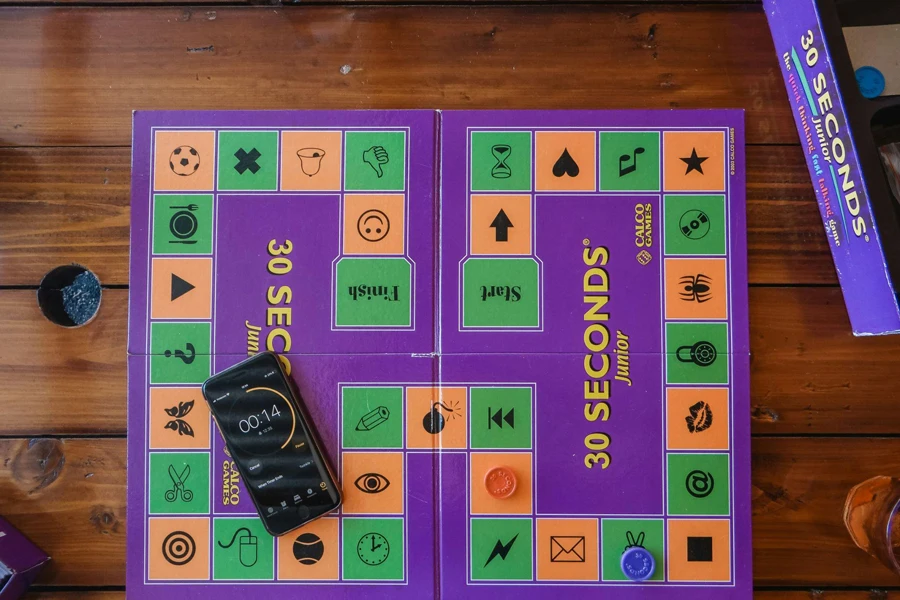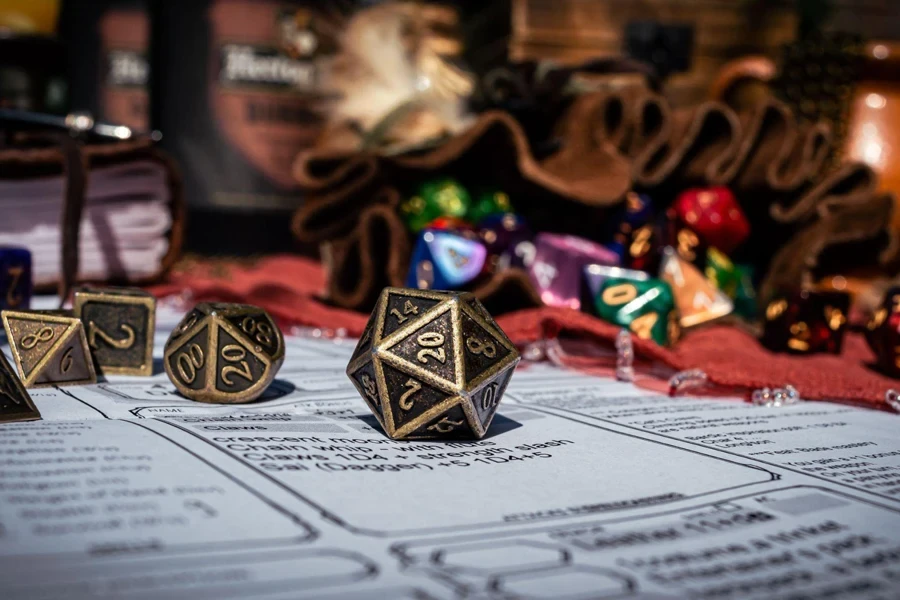Table of Contents
Introduction
Board Game Market Landscape
Essential Factors to Consider When Choosing a Board Game
Top Board Game Picks for 2024
Conclusion
Introduction
As we step into 2024, the world of board games continues to captivate players of all ages, offering a delightful escape from the digital realm. With an ever-expanding array of options, choosing the perfect board game can be a daunting task. Fear not, for this comprehensive guide will help online retailers navigate through the intricacies of the board game market, equipping you with the knowledge to make an informed decision and elevate your customers’ gaming experience to new heights.
Board Game Market Landscape in 2024
The global board games market is projected to reach an impressive $18 billion by 2024, with a compound annual growth rate (CAGR) of 13.27% from 2022 to 2028. This substantial growth is fueled by the increasing popularity of tabletop gaming as a means of social interaction and entertainment.
Innovation in game design is a driving force, with designers exploring diverse themes and mechanics, from cooperative gameplay to immersive storytelling. Licensed games based on popular movies, TV shows, and video games continue to attract fans, leveraging existing fan bases. Additionally, the market is becoming more inclusive, appealing to a wider demographic, including families and casual gamers.

The board game market is highly fragmented, with major players like Hasbro, Mattel, Ravensburger AG, Asmodee Group, and Goliath Games collectively holding a 15-20% market share in 2023. These industry leaders actively engage in strategic initiatives such as mergers, facility expansions, and partnerships to broaden their product portfolios and strengthen their market presence.
Essential Factors to Consider When Choosing a Board Game
Game Mechanics and Complexity
Game mechanics are the core rules and systems that guide board game play, influencing its flow and feel. The complexity level is critical, affecting appeal to different players. Some enjoy the depth and strategy of complex games with intricate rules, like Terraforming Mars or Gloomhaven, while others prefer the simplicity and quick play of casual party games, such as Codenames or Dixit.
Finding the right complexity balance is vital to meet player preferences and skill levels—too simple games might bore enthusiasts, while too complex games could overwhelm casual players. Jesse van Elteren’s blog post analyzing BoardGameGeek data suggests complex games often receive higher ratings, indicating a possible bias towards the site’s dedicated hobbyist community. Thus, selecting board games requires careful consideration of the desired complexity and gameplay mechanics to ensure they resonate with the intended audience.
Theme and Immersion
Board games often draw players in with their themes, transporting them to alternate realities and enhancing engagement. Popular themes such as fantasy, science fiction, and history are especially appealing. Theme and mechanics in board games have a mutual relationship; a strong theme can amplify solid mechanics, adding depth and urgency to the gameplay.
Immersion is the deep engagement with a game’s theme. Although board games may not offer the visual immersion of video games, they can still create a vivid sense of place through art, components, and theme-aligned mechanics. Key to immersion are compelling art, high-quality thematic components, thematic mechanics, and seamless theme-gameplay integration. These elements, when executed effectively, transport players into the game’s universe.

Games like Gloomhaven, Everdell, Terraforming Mars, and Spirit Island are noted for their thematic depth and immersion, enhancing player involvement. Yet, not everyone prioritizes theme and immersion; some prefer the simplicity of mechanics. Abstract strategy games, even without a strong theme, can still captivate, showcasing diverse player preferences.
Player Count and Age Range
Player count, a key detail on game boxes, significantly affects design decisions. Games may target specific player counts or be scalable, though scalability often involves compromises. Two-player games typically focus on strategic depth, while more players introduce variability and potential for downtime. To address downtime in games for four or more players, developers might add specific mechanics, like Settlers of Catan’s “special build phase,” which can change the gameplay experience.
Considering age range ensures the game’s content and complexity match its intended audience. The board game market ranges from young children to adults, with the 5-12 year age group being notably active. However, with the average age of tabletop gamers in North America at 35, adult engagement is also significant. Different age groups have varying preferences, making it crucial to align game complexity with the targeted age range. Family games aim for wider accessibility, while complex games cater to adult enthusiasts.

Replay Value and Expansions
Replay value or replayability refers to the extent to which players want to play a game again after completing it once or more. Games with high replay value keep players engaged over multiple sessions.
– Factors that contribute to high replayability include:
1) Variable setup, multiple paths to victory, and emergent gameplay that makes each playthrough feel different. Examples include games like Spirit Island, Brass Birmingham, and Concordia.
2) Expansions that add new content, challenges, and variety to the base game. Expansions can breathe new life into a game and extend its longevity.
3) A large number of different characters, powers, scenarios, or game-altering modules to mix and match each game. This is seen in games like Betrayal at House on the Hill, Marvel Champions, and Smallworld.
4) An intrinsically enjoyable core game loop or “engine” that players want to re-engage with over and over, even without tons of variability. The Mind is an example of a simple game with high replayability.

Replayability is subjective; a game endlessly engaging to some may seem repetitive to others. Preferences for game complexity, mechanics, and themes influence replayability perceptions. Some argue modern games focus too much on “content-based” replayability—adding more to the box—at the expense of deeper gameplay. Dominion’s influence made expansions and variable setups a checkbox expectation. But at its core, replayability seems to come down to 1) an inherently fun and solid game engine that players want to revisit and 2) mechanisms that add variety and new challenges to that core engine over multiple plays. The best replayable games balance both.
Component Quality and Aesthetics
High-quality components greatly enhance the gaming experience. Attractive artwork, detailed miniatures, and premium materials such as wood or metal, along with thoughtful graphic design, contribute to a more immersive and enjoyable game. Component quality encompasses both aesthetics and utility—the aesthetics pertain to the look and feel of the components, while utility focuses on their effectiveness in gameplay. Ideally, high-quality components should excel in both aspects.
– Examples of games known for their excellent component quality and aesthetics include:
1) Wingspan – Features beautiful artwork and high-quality custom dice, eggs, and bird house
2) Brass: Birmingham – Has an evocative board with day/night sides, and comes with premium poker chips in the deluxe edition
3) Rising Sun – Known for its highly detailed and impressive miniatures
4) Takenoko – Uses colorful wooden components, custom-shaped bamboo pieces, and a cute panda figure to bring its theme to life

Overproduced games can overemphasize aesthetics, possibly at functionality’s expense. The “overproduced” versus “high-quality” line is subjective. Fans of complex Euro games often prioritize mechanics over visuals, advocating for investment in development and playtesting over aesthetics. However, many gamers appreciate the tactile satisfaction of attractive, quality components, improving the experience and attracting new players. With the board game market becoming more competitive, component quality expectations are increasing, and standout aesthetics can help games stand out.
Top Board Game Picks for 2024
Best Strategy Games for Enthusiasts
1. Terraforming Mars – A complex engine-building game where players compete to make Mars habitable, offering deep strategy and replay value.
2. Gloomhaven – An epic fantasy campaign game that combines tactical combat with RPG elements, providing hours of immersive gameplay.
Best Cooperative Games for Team Building
1. Pandemic Legacy: Season 1 – An intense cooperative game where players work together to save the world from disease outbreaks, with a compelling narrative that unfolds over multiple play sessions[20].
2. Spirit Island – A complex cooperative game where players take on the roles of island spirits, defending their home from invaders.
Best Family-Friendly Games
1. Ticket to Ride: Europe – A classic gateway game that takes players on a train adventure across Europe, suitable for ages 8 and up.
2. Codenames: Pictures – A clever word-guessing game using pictures, perfect for family gatherings and accommodating larger groups.

Best Party Games for Social Gatherings
1. Wavelength – A unique social guessing game that challenges players to think on the same wavelength, sparking lively discussions.
2. Dixit – A beautifully illustrated game of creative storytelling and interpretation, suitable for a wide age range.
Best Solo Gaming Experiences
1. Mage Knight – A deep and rewarding solo adventure game that combines exploration, combat, and deck-building mechanics.
2. Arkham Horror: The Card Game – A narrative-driven solo card game set in the Lovecraftian universe, offering a rich, branching storyline.
Conclusion
Choosing the perfect board game in 2024 is an exciting journey that requires careful consideration of various factors. By understanding the market landscape, key trends, and essential game elements, you can help the consumers make informed decisions that align with their preferences and gaming group. Whether you seek family fun, strategic depth, or solo adventures, the board game industry has something to offer for every taste. If you are interested in exploring more content on board games and sports in general, please hit the “Subscribe” button. We’ll further have more for you.




